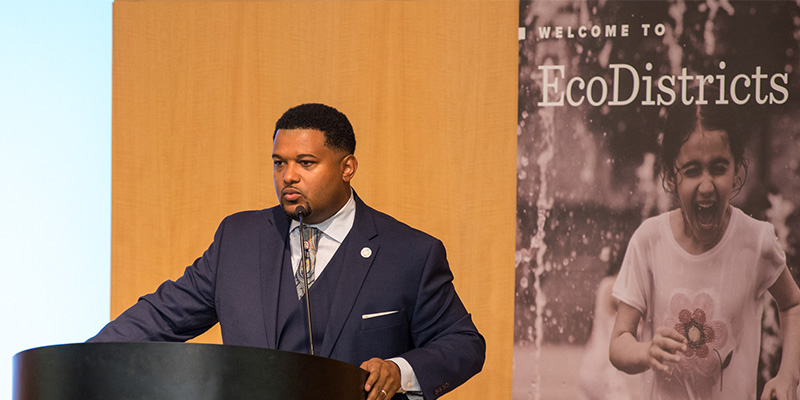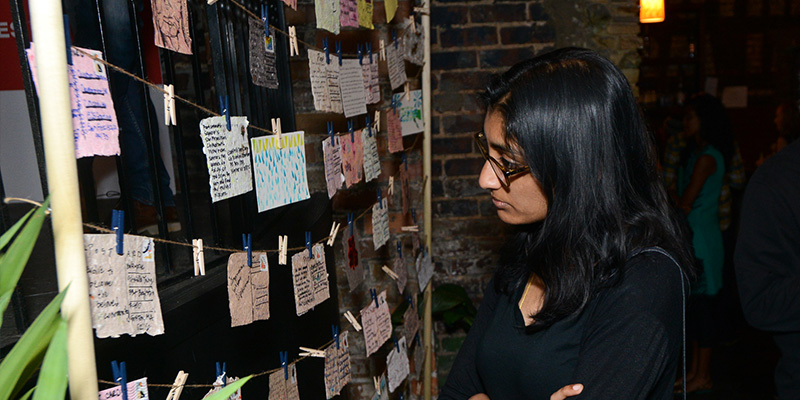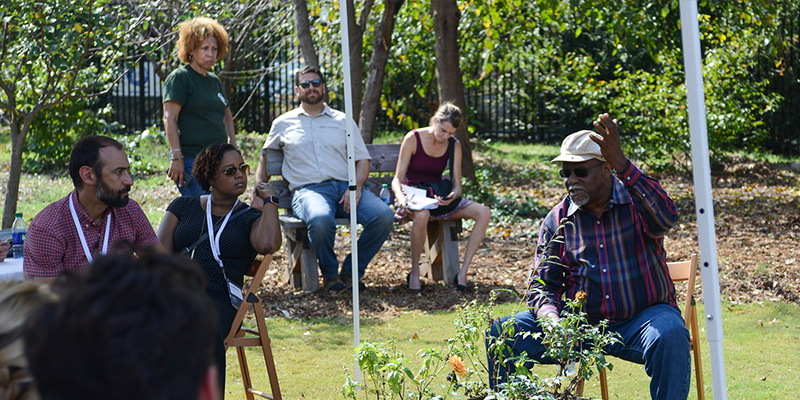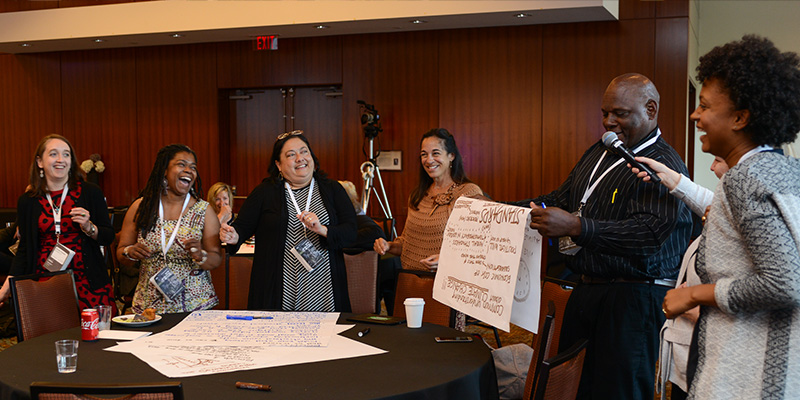Three weeks ago, 300 leading urban and community development practitioners descended on Atlanta for the 2017 EcoDistricts Summit, a spirited and inspiring gathering on the future of urban and community development. With Atlanta undergoing a massive revitalization effort after decades of stagnant growth in the city’s core and unchecked suburban sprawl, the Summit zeroed in on exploring innovative and results-driven development strategies that link racial equity, resiliency, and sustainability outcomes. In a city historically defined by its big moves, corporate power, and reliance on developers, there is an emerging number of catalyst projects and partnerships that are redefining the urban landscape.
Over the years, the Summit has played an important role in the growth and evolution of the EcoDistricts movement. What started as an event to bring leading urban development leaders together to learn about next generation district-scale sustainability best practices has turned into a deeper exploration of the underlying issues that our host communities are grappling with in the areas of community development and urban sustainability.
The 2017 Summit focused on the full range of sustainability considerations, including racial equity, resiliency, health, and economic and civic innovation in delivering neighborhood and district-scale projects. We heard from designers, planners, community leaders, municipal officials, and other city change makers, dove deep into local and national neighborhood development projects, forged diverse connections and helped unpack the question — what will it take to build sustainable, equitable, and resilient neighborhoods? As an event that attracts a diverse set of stakeholders and professionals, the Summit provided a platform for an honest and at times raw conversation about what is working and not working as we live through a massive era of city building.

To open the Summit, keynote speaker Nathaniel Smith, CEO and Chief Equity Officer of the Partnership for Southern Equity, and Chuck Meadows, former Executive Director of the Atlanta Beltline Partnership, challenged us to confront history and systemic drivers of inequity to create inclusive neighborhoods where everyone matters. Their call to action was reinforced by our new friends at designing the We, who built an interactive exhibit on the long-standing history of spatial segregation in Atlanta and the disproportionate impact to people of color and low-income folks over the past 75+ years. Their Undesign the Redline exhibition educated us on the history and consequences of redlining through the voices of one redlined community in Atlanta.

We then heard from Duriya Farooqui, Executive Director of Atlanta Committee for Progress, and Tim Keane, Commissioner of Planning and Community Development, two local leaders who are helping to shape Atlanta’s economic and revitalization efforts. In a city known paradoxically for its muscular economic development and anemic urban design and planning, Duriya and Tim shed light on two important initiatives that are simultaneously addressing neighborhood sustainability and equity: City Design and the Westside Future Fund. City Design is the City’s first comprehensive planning and urban design strategy with an emphasis on whole systems in decades, while the Westside Future Fund is a partnership to address deepening poverty and blight in one of Atlanta’s most historic and important African American communities.
We spent the remainder of Day One in the field, exploring eight innovative local projects that brought attendees into different neighborhoods across Atlanta for tours and in-depth discussions on the challenges each community faced, and the solutions neighborhood development could bring. We call these in depth conversations “Studios,” and they revealed some important lessons about having a diverse range of approaches to community development – from the role of multimodal infrastructure in activating over 5,000 acres of underdeveloped land in the core of the City, to the forging of a partnership between a charter school, affordable housing provider, and wellness provider to attack poverty head-on, to the role of artists to build economic opportunity and create a broader sense of community. Our Studio Report, available online, summarizes the outcomes of each of our impactful Studio sessions.

On the second day of the Summit, we focused on inspiration, solutions, and collaboration among attendees. We kicked off the morning by presenting our “Morning Report” of outcomes from Day One’s Studio sessions. Attendees conversed in groups to share what they experienced in their Studio sessions. Then we heard from Doug Farr, urban planning pioneer and author of the upcoming book Sustainable Nation: Urban Design Patterns for the Future. In his morning keynote, Doug shared research that suggests nearly 58% of Americans have identified that they are afraid of talking to strangers. Doug then challenged us to overcome this fear to work inclusively to build the world we want in a child’s lifetime.
Throughout Day 2, Summit attendees participated in Breakthrough sessions that showcased collaborative thinking on critical EcoDistricts topics. Attendees heard from national leaders in topics such as resilient neighborhoods, smart cities, and project financing, as well as diverse neighborhood projects from across the country. In the morning, we heard from San Francisco’s Chinatown neighborhood and Denver’s RiNo Arts District on how both are leveraging local culture to preserve neighborhood identity as their communities rapidly change and gentrify. We also heard from the Lloyd EcoDistrict in Portland and the Capitol Hill EcoDistrict in Seattle, both of which are integrating the EcoDistricts Certified program to measure their existing neighborhood sustainability and equity programs. In the afternoon, national equity leaders led attendees through an eye-opening and powerful racial equity assessment exercise. Attendees also learned how to build engagement into digital resilience tools from the organization IDEO, which has created a flood resilience plan and tool for New York City.
After a full day of learning, a closing engagement session asked attendees to examine their experiences at the Summit and write their own personal or professional commitments. Among the responses we got: “I commit to expanding the sphere of possibilities to continue doing community design work differently!”

The 2017 Summit would not have been possible without generous underwriting and scholarship support from our national funders at The Kresge Foundation, Surdna Foundation, Kendeda Fund, Summit Foundation, JPB Foundation, and Enterprise Community Partners, and our Atlanta supporters at The Turner Foundation, Blank Family Foundation, and Community Foundation for Greater Atlanta. Please visit here for a complete list of Summit supporters.
Now, it’s time to look forward to the 2018 EcoDistricts Summit. Details of the 2018 Summit, including a date, host city, and call for proposals, will be announced soon. Sign up for our newsletter to get more information on the event. We hope to see you there.

